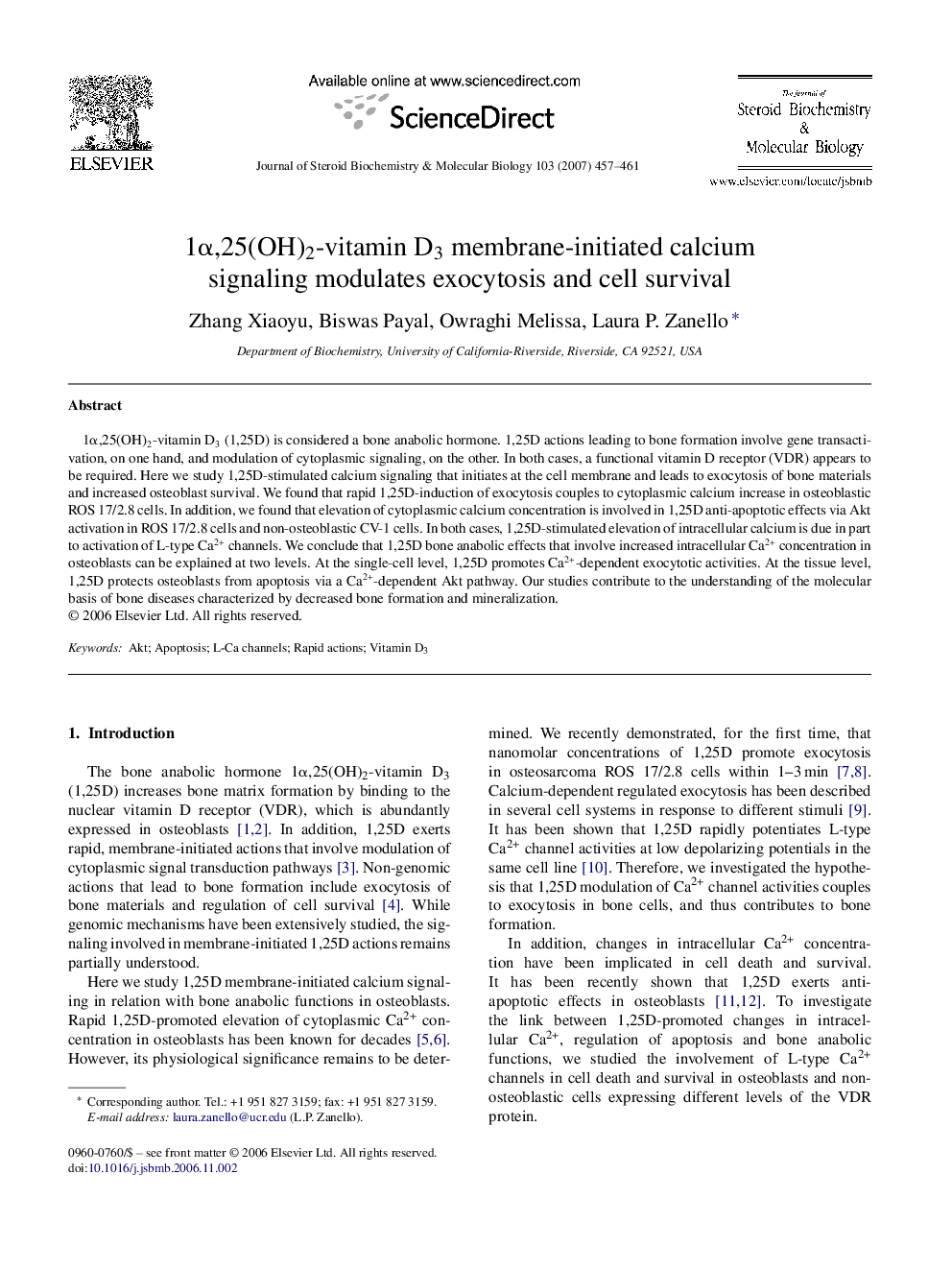| Article ID | Journal | Published Year | Pages | File Type |
|---|---|---|---|---|
| 1992561 | The Journal of Steroid Biochemistry and Molecular Biology | 2007 | 5 Pages |
1α,25(OH)2-vitamin D3 (1,25D) is considered a bone anabolic hormone. 1,25D actions leading to bone formation involve gene transactivation, on one hand, and modulation of cytoplasmic signaling, on the other. In both cases, a functional vitamin D receptor (VDR) appears to be required. Here we study 1,25D-stimulated calcium signaling that initiates at the cell membrane and leads to exocytosis of bone materials and increased osteoblast survival. We found that rapid 1,25D-induction of exocytosis couples to cytoplasmic calcium increase in osteoblastic ROS 17/2.8 cells. In addition, we found that elevation of cytoplasmic calcium concentration is involved in 1,25D anti-apoptotic effects via Akt activation in ROS 17/2.8 cells and non-osteoblastic CV-1 cells. In both cases, 1,25D-stimulated elevation of intracellular calcium is due in part to activation of L-type Ca2+ channels. We conclude that 1,25D bone anabolic effects that involve increased intracellular Ca2+ concentration in osteoblasts can be explained at two levels. At the single-cell level, 1,25D promotes Ca2+-dependent exocytotic activities. At the tissue level, 1,25D protects osteoblasts from apoptosis via a Ca2+-dependent Akt pathway. Our studies contribute to the understanding of the molecular basis of bone diseases characterized by decreased bone formation and mineralization.
